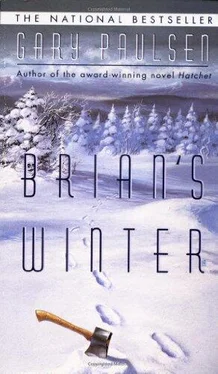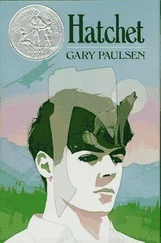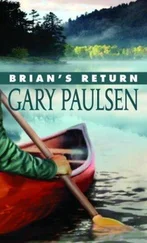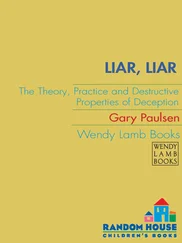Gary Paulsen - Brian's Winter
Здесь есть возможность читать онлайн «Gary Paulsen - Brian's Winter» весь текст электронной книги совершенно бесплатно (целиком полную версию без сокращений). В некоторых случаях можно слушать аудио, скачать через торрент в формате fb2 и присутствует краткое содержание. Год выпуска: 1998, ISBN: 1998, Жанр: Детские приключения, на английском языке. Описание произведения, (предисловие) а так же отзывы посетителей доступны на портале библиотеки ЛибКат.
- Название:Brian's Winter
- Автор:
- Жанр:
- Год:1998
- ISBN:9780440227199
- Рейтинг книги:4 / 5. Голосов: 1
-
Избранное:Добавить в избранное
- Отзывы:
-
Ваша оценка:
- 80
- 1
- 2
- 3
- 4
- 5
Brian's Winter: краткое содержание, описание и аннотация
Предлагаем к чтению аннотацию, описание, краткое содержание или предисловие (зависит от того, что написал сам автор книги «Brian's Winter»). Если вы не нашли необходимую информацию о книге — напишите в комментариях, мы постараемся отыскать её.
, 13-year-old Brian Robeson learned to survive alone in the Canadian wilderness, armed only with his hatchet. Finally, as millions of readers know, he was rescued at the end of the summer. But what if Brian
been rescued? What if he had been left to face his deadliest enemy-winter?
Gary Paulsen raises the stakes for survival in this riveting and inspiring story as one boy confronts the ultimate test and the ultimate adventure.
Brian's Winter — читать онлайн бесплатно полную книгу (весь текст) целиком
Ниже представлен текст книги, разбитый по страницам. Система сохранения места последней прочитанной страницы, позволяет с удобством читать онлайн бесплатно книгу «Brian's Winter», без необходимости каждый раз заново искать на чём Вы остановились. Поставьте закладку, и сможете в любой момент перейти на страницу, на которой закончили чтение.
Интервал:
Закладка:
Here it was all mystery to him. He had seen pictures of snowshoes and had a vague idea that they seemed to be a web, kind of like a tennis racket — a very crude tennis racket — but that was it.
He had plenty of moose hide left and he started by cutting a lace half an inch wide. He did not know how much he would need but figured it should be long so he just kept cutting, running along the edge of a large piece of hide, cutting around and around the edge, stopping often to sharpen the knife on the stone until he had a pile of lacing lying on the ground by the fire.
By this time it was dark but he fed small bits of wood to the fire — the shelter was very tight and stayed surprisingly warm from just a small flame — and continued working.
He did not know how to make the rest of the snowshoe. He had seen pictures and knew it had to be a web of some sort but could not visualize how to start. In the end he just started in the middle and worked to the ends, tying the strips of moose hide crosswise, fastened to each side, making horizontal strips about two inches apart, each strap pulled tight and tied off in a double knot.
The hide was hard and he had to soften it by rubbing it over a stick to break it down, which slowed him, and it was late by the time he’d finished the crosspieces on one shoe but instead of going to bed he continued.
The strips that ran the long way he tried simply weaving into place but they were too loose and so he tied them off to each cross-strap as he went from one end of the shoe to the other, again with the straps about two inches apart.
It was moving toward morning when he finished the webbing on one shoe and he almost laughed at how it looked. He had not taken the fur off the hide strips and there was enough hair to fill all the holes with fuzz. He started to burn it off and then realized it would help keep him up in soft snow. He finally crawled into his bed to sleep about four in the morning, still smiling at how the shoe looked.
He slept hard until daylight — about nine o’clock — and then kindled the fire and restarted it with the coals that were still glowing. He had chopped some chunks of moose meat and he put a kettle on with slivers of meat and snow to make a breakfast stew and as soon as the shelter was warm went back to work.
The second shoe went much faster because of the practice he’d had on the first one and by midday he had finished webbing it. He ate the stew and drank the broth and then looked once more at his handiwork.
They looked odd, to say the least — downright ugly. The fur was so thick he could hardly see the lacing. But they also looked strong and now all he had to do was find a way to fix them to his feet.
He could think of no mind pictures, no memories that showed snowshoe bindings, and finally he simply tied straps across down the middle, as tightly as possible, to jam his feet beneath.
Then there was nothing to do but try them. He banked the fire so that the coals would hold for a time, got dressed and took the shoes outside.
They were very tight on his boots and felt snug and he set off trying to walk on them at once. Around the shelter the snow was packed down where he had walked and the shoes were easy — clumsy, but he could skid them along.
As soon as he moved away from the shelter in fresh snow everything changed. He took two steps and fell flat on his face in the snow. The tips kept digging in and tripping him and he tried holding his toes up, which didn’t help, and continued stumbling along, falling over frontward, until he thought of moving the foot strap forward a bit.
This just took a minute and then when he stepped off, his foot was farther forward and lifted the front of the shoe first, cleared the tip and pulled it across the top of the snow.
It made all the difference. He tripped twice more before he developed a pace that kept his legs far enough apart to prevent the shoes from hitting each other and then he moved into deeper snow.
It was amazing. The snow was powdery and the shoes didn’t keep him right on top as he’d thought they might. But he only went down three or four inches and stopped, instead of his foot going all the way down into two feet of snow, and as an added benefit the snowshoes kept the snow away from his feet and legs.
He didn’t get snow down his boots, his legs stayed warmer and dryer and that kept the rest of his body warmer and dryer but more, much more than that, he could move again.
He moved straight to a stand of dead poplar a quarter mile down the lakeshore. Poplars often died standing and for that reason stayed dry and out of the snow and were good firewood. He hadn’t been able to get at them because of the snow but the shoes made it easy.
He broke off limbs and knocked over small dead trees and, walking with a kind of forward churning motion, he spent the rest of the day bringing in wood until he had a huge pile next to the shelter — enough for a week.
It was incredible, he thought, how the snowshoes seemed to change everything, change his whole attitude. He’d been closing down, he realized — settling into the shelter, not paying attention to things, getting more and more into his own thinking, and the shoes changed all that. He felt like moving, hunting, seeing things, doing things again.
Thinking of hunting brought his food supply into his thoughts and he brushed the snow away from the moose meat and was stunned to see how much he’d eaten. He hadn’t gained weight, had lost a small amount as a matter of fact, and yet apparently without knowing it had been eating like a wolf.
He’d eaten both front shoulders, the back and hump area and one back leg — all the meat was chopped off the bones in those areas. All he really had left was the left rear leg and then chopping and boiling the bones to make the meat jelly-stew.
He would have to hunt again and that night he spent the hours until he slept making sure his war bow and big arrows were in shape, checking the lance and sharpening the hatchet and knife and retightening his snowshoes where they had become loose from gathering wood all day.
That night the temperature dropped like a stone, so that he heard trees exploding again, but he slept hard and down and tight in his shelter and dreamed of walking on white clouds…
Chapter FIFTEEN
Everything had changed.
Somehow he had thought that it would be like normal hunting except colder and whiter but it wasn’t — it all seemed a different world.
He made a breakfast stew and ate while it was still dark and didn’t open the shelter until close to ten, when the sun was well up.
Brian had never felt such cold, never thought he would see it, never thought that if he did see such cold he would live through it. He had his hood up and had to breathe slowly in through his nose to warm the air so that it would not stop halfway down his throat.
It was colder than before, how cold he couldn’t guess, but when he went to the bathroom some of his urine froze on the way to the ground and broke when it hit and he spit on a clear area of hard-packed snow and the spit bounced.
Still he did not feel cold. There was no wind, not a breath, and he soon warmed inside his parka as he walked and started to hunt.
He hadn’t shot in a while and wanted to try some practice shots but knew he would lose the arrows beneath the snow. He settled for pulling the bow back a few times and flexing his muscles and found that because the parka was so bulky he had to lean forward a bit to let the bowstring clear his sleeve. Also he couldn’t keep his mitten off for long or his hand would freeze, so he would have to have time to shake the mitten off before shooting.
Game was everywhere. They didn’t seem to mind the cold and he saw rabbits all over the place. He could have shot several but the moose had spoiled him. There was so much food in the large animal and only the one death — it still bothered him to kill — and it seemed more proper in some way. He would have to kill perhaps a hundred and fifty rabbits to equal one moose…
Читать дальшеИнтервал:
Закладка:
Похожие книги на «Brian's Winter»
Представляем Вашему вниманию похожие книги на «Brian's Winter» списком для выбора. Мы отобрали схожую по названию и смыслу литературу в надежде предоставить читателям больше вариантов отыскать новые, интересные, ещё непрочитанные произведения.
Обсуждение, отзывы о книге «Brian's Winter» и просто собственные мнения читателей. Оставьте ваши комментарии, напишите, что Вы думаете о произведении, его смысле или главных героях. Укажите что конкретно понравилось, а что нет, и почему Вы так считаете.











